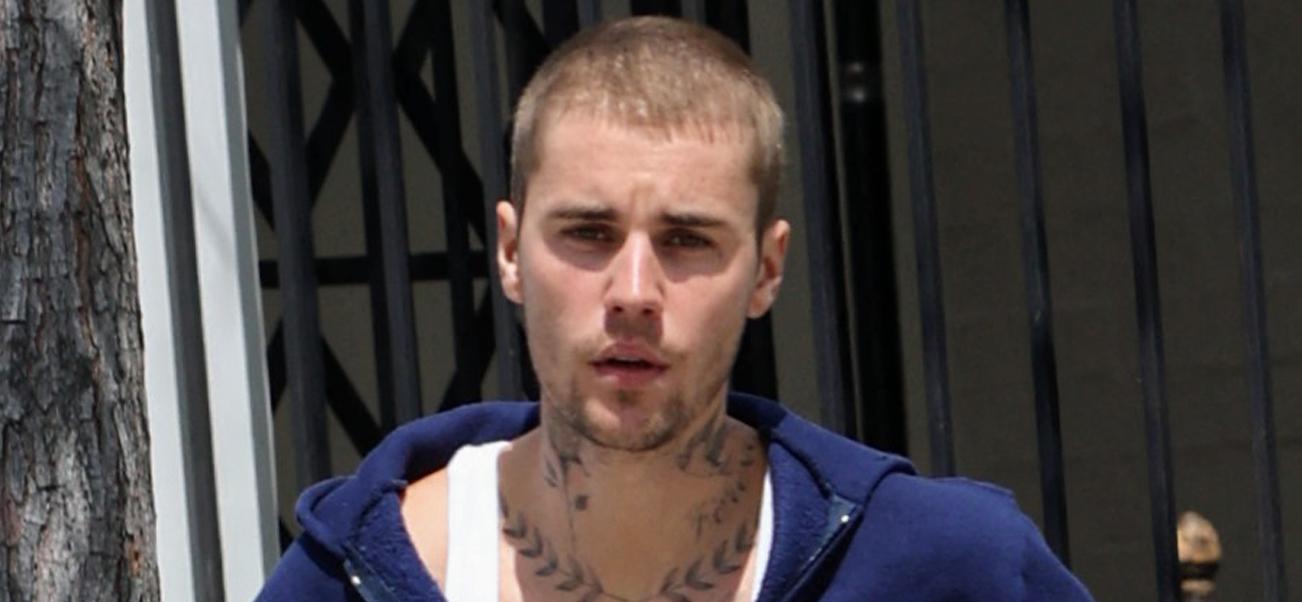Entertainment
Justin Bieber Spreading Holiday Spirit With Good Samaritan Move

Justin Bieber is in holiday mode, kicking off the season with a real-world act of kindness.
This good-deed moment is not the singer’s first rodeo, as his reputation for spontaneous generosity includes a memorable 2015 moment when he quietly paid for strangers’ meals.
Justin Bieber’s latest roadside gesture proves that despite his sometimes controversial public image, he still finds ways to show up for people when they least expect it.
Article continues below advertisement
Justin Bieber Stops To Help Stranded Driver

Bieber is spreading early holiday goodwill after stopping to help a stranger whose car had broken down on a busy road. A video captures the stunned man venting about his struggles, explaining that he has been “trying so hard in life, but it’s so tough.”
The man’s red car sat on the shoulder with its hood up as traffic sped by, when suddenly Bieber appeared, having spotted him in need. The driver, still in disbelief, asks, “Are you Justin Bieber?” and the singer confirms, greeting him warmly and sharing a hug.
They share a quick “I love you” before Bieber asks what is going on, and when the man hesitates, asking if Bieber truly wants to know, he confirms. The man then opens up about his situation and stops recording mid-conversation.
Article continues below advertisement
TMZ notes that the man later posted a follow-up, expressing gratitude for Bieber’s kindness, writing, “Thanks for the prayer and good energy JB.”
Article continues below advertisement
The ‘Baby’ Hitmaker Sparks Chain Of Kindness With Surprise Pizzeria Gesture
Even amid headlines about his less-than-savory moments, Bieber has consistently shown a generous side, going out of his way to help others.
Pop Crush shared a story in 2015, when the star’s generosity shone on Martin Luther King, Jr. Day. A Yahoo editor happened to spot Bieber at a pizzeria and witnessed him quietly covering the bill for strangers dining nearby.
Refusing to keep it to herself, she wrote on X, “Saw @justinbieber at a pizzeria. When he left, he picked up the tab for the strangers sitting next to him. Good Guy Justin Bieber.”
In a surprising twist, Bieber’s kindness inspired a ripple effect, as the people he helped immediately paid it forward to two other diners.
Article continues below advertisement
The Songwriter Opened Up To A Stranger Amid A Runyon Canyon Hike
Bieber is not just generous; he also takes moments to connect with people unexpectedly. TMZ highlighted a moment from May 2019 when a younger Bieber was hiking Runyon Canyon in Los Angeles.
He passed a couple, Mike Maedke and his wife, who recognized him and greeted him with a casual, “Hey Biebs, what’s up?” That brief encounter turned into a 20-minute conversation where Bieber reflected on life, fame, and the chaos of L.A. from a mountaintop bench.
During the chat, he shared how much he missed Canada and even paused to play with a passing dog, kneeling to interact with the pet. The reflective moment continued until Bieber was spotted by two fans nearby. Before leaving, he gave Mike a fist bump and quietly walked away, returning to his hike.
Article continues below advertisement
Inside The Father-Of-One’s Private World
The 31-year-old has grown increasingly private over the years, keeping his off-stage life largely out of the public eye. But a close pal of the pop star offers a rare look at his personal side, revealing how he connects with friends through basketball.
The Blast shared insights from Ron Abaekobe, founder of The League, an exclusive L.A. basketball club where celebrities and creatives gather. Bieber plays on Team Skylark, named after his fashion label, and has formed close bonds with teammates over time.
Abaekobe described Bieber as “super spiritual, one of the most down-to-earth people.” Before every game, Bieber leads the team in a spontaneous prayer, giving thanks and asking for everyone’s health and protection. The ritual is not rehearsed, yet it sets the tone and energy for the group.
Justin Bieber Shows Fans A More Thoughtful Side On Twitch

Bieber has found a new way to connect with people outside his usual world, turning to Twitch streams to offer an authentic glimpse into his life. Abaekobe revealed that he inspired Bieber to start streaming.
He explained that the Canadian native uses the platform to share “how he calibrates his mind, and where his moral compass is.” This gives fans a more personal perspective than traditional performances allow.
The star’s close pal discloses a moment where, in one session, Bieber carved pumpkins with friends while discussing personal boundaries. Abaekobe added that the streams highlight Bieber’s effort to block out negativity and prove critics wrong.










